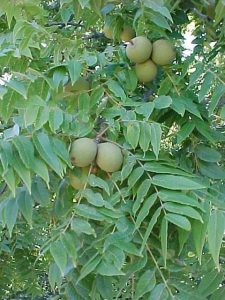Washington, D.C., December 18, 2018 – The United States Department of Agriculture (USDA) Animal and Plant Health Inspection Service announced that the North Pole was checking out its new USDA traveler information web page. The web page provides important information about which agricultural items may enter the United States – and which ones are best left behind. This helps to protect the health of our country’s plants, animals and natural resources. “... We are thrilled to hear directly from Santa’s elves that the big man himself was comparing his gift list to our requirements,” said U.S. Secretary of Agriculture Sonny Perdue. “We thank Santa for setting a great example. We know he always gets a permit for his reindeer to enter the U.S., but this year he’s going above and beyond to help protect our farmers, ranchers and citizens.”
Food and other items (plants, seeds, wood, fiber or straw) from other countries can carry pests and diseases not found in the United States. Certain items are not allowed to be carried in by travelers, but some items may be allowed with specific documentation. USDA’s new site helps everyone know what is okay to bring in to the U.S. : https://www.aphis.usda.gov/travel
Tag: plant health
March – Birds are Active, Plants are Not
72nd Meeting of the NJDelMarVaPa Plant Pathologists
 pathology group, held at the University of Delaware. We had a good meeting and some lively discussions! Student work was presented, as well as research and disease updates from regional colleagues. This casual meeting is one of the best regional opportunities for networking and updates.
pathology group, held at the University of Delaware. We had a good meeting and some lively discussions! Student work was presented, as well as research and disease updates from regional colleagues. This casual meeting is one of the best regional opportunities for networking and updates.NFG 3/12/2017
UD Plant Diagnostic Clinic Final Report 2016
During 2016, the Plant Diagnostic Clinic processed approximately 656 non-survey routine clinic samples. Nursery surveys for Delaware Department of Agriculture resulted in a few samples of boxwood and gardenia. Other samples were diagnosed in field situations, and not brought in for analysis. Phone inquiries and e-mail requests for information were replied to in addition to physical specimens submitted to the lab. Most samples were from Delaware. Crop sources for those were, in order of predominance: Ornamentals (55 %), Vegetables (22%), Field Crops (10%), Fruit, Turf, Insect ID, Fungal ID, and Christmas trees.
Take a look at the full report: Delaware Plant Diagnostic Clinic Report 2016 Final Feb 2017
NFG 2/1/2017
Black Walnut Toxicity
Black Walnut Toxicity refers to the inhibition of the growth of plants located near black walnut trees. This is due to a type of allelopathy, where one plant produces a substance that inhibits growth of another plant growing nearby. Black walnut produces a chemical called juglone, which occurs naturally in the roots, buds, and nut hulls. Juglone may build up in the root zone or drip line of a walnut tree and result in poor growth of sensitive plants, and roots can continue to produce juglone for a year or two after a tree is cut down. Plants that are sensitive may turn yellow, wilt, be stunted, or die. Symptoms may be mistaken for nutrient deficiencies or plant disease, but plants will not recover. Some plants are more sensitive than others, including tomato, potato, pepper, cabbage, columbine, lily peony, blueberry, hydrangea, lilac, privet, paper birch, white pine, Norway spruce, silver maple, and saucer magnolia. Landscape beds and gardens should be sited away from black walnut, and black walnut should not be chipped for mulch. Plants that are tolerant of black walnut toxicity include red maple, river birch, hornbeam, buckeye, catalpa, red bud, white oak, fringe tree, forsythia, ninebark, elderberry, juniper, hemlock, arborvitae, and many herbaceous perennials. For a complete list, from the Morton Arboretum, see the following link: http://www.mortonarb.org/files/Black%20Walnut%20toxicity%2C%20plants%20tolerant%20of%202014.pdf
Plants that are sensitive may turn yellow, wilt, be stunted, or die. Symptoms may be mistaken for nutrient deficiencies or plant disease, but plants will not recover. Some plants are more sensitive than others, including tomato, potato, pepper, cabbage, columbine, lily peony, blueberry, hydrangea, lilac, privet, paper birch, white pine, Norway spruce, silver maple, and saucer magnolia. Landscape beds and gardens should be sited away from black walnut, and black walnut should not be chipped for mulch. Plants that are tolerant of black walnut toxicity include red maple, river birch, hornbeam, buckeye, catalpa, red bud, white oak, fringe tree, forsythia, ninebark, elderberry, juniper, hemlock, arborvitae, and many herbaceous perennials. For a complete list, from the Morton Arboretum, see the following link: http://www.mortonarb.org/files/Black%20Walnut%20toxicity%2C%20plants%20tolerant%20of%202014.pdf
NFG 1/4/2016

